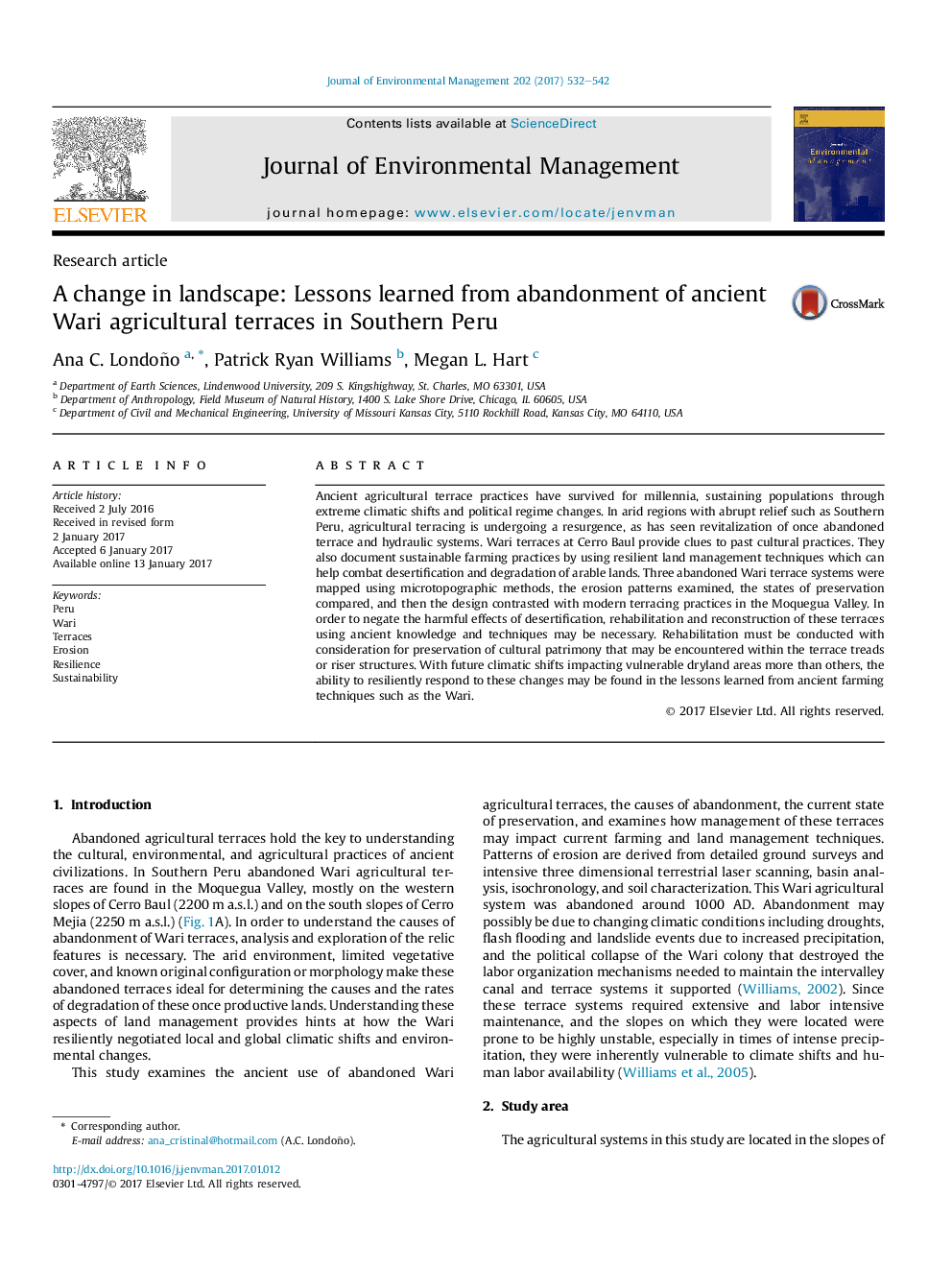| Article ID | Journal | Published Year | Pages | File Type |
|---|---|---|---|---|
| 5116871 | Journal of Environmental Management | 2017 | 11 Pages |
â¢Post Wari terrace abandonment had led to arable land degradation.â¢Three abandoned terraces around Cerro Baul were surveyed and reconstructed.â¢Erosional patterns and rates are a reflection of land morphology and management.â¢Ancestral practices like conservation irrigation and polyculture should be adopted.â¢Terrace reconstruction may be necessary due to climatic shifts towards aridity.
Ancient agricultural terrace practices have survived for millennia, sustaining populations through extreme climatic shifts and political regime changes. In arid regions with abrupt relief such as Southern Peru, agricultural terracing is undergoing a resurgence, as has seen revitalization of once abandoned terrace and hydraulic systems. Wari terraces at Cerro Baul provide clues to past cultural practices. They also document sustainable farming practices by using resilient land management techniques which can help combat desertification and degradation of arable lands. Three abandoned Wari terrace systems were mapped using microtopographic methods, the erosion patterns examined, the states of preservation compared, and then the design contrasted with modern terracing practices in the Moquegua Valley. In order to negate the harmful effects of desertification, rehabilitation and reconstruction of these terraces using ancient knowledge and techniques may be necessary. Rehabilitation must be conducted with consideration for preservation of cultural patrimony that may be encountered within the terrace treads or riser structures. With future climatic shifts impacting vulnerable dryland areas more than others, the ability to resiliently respond to these changes may be found in the lessons learned from ancient farming techniques such as the Wari.
